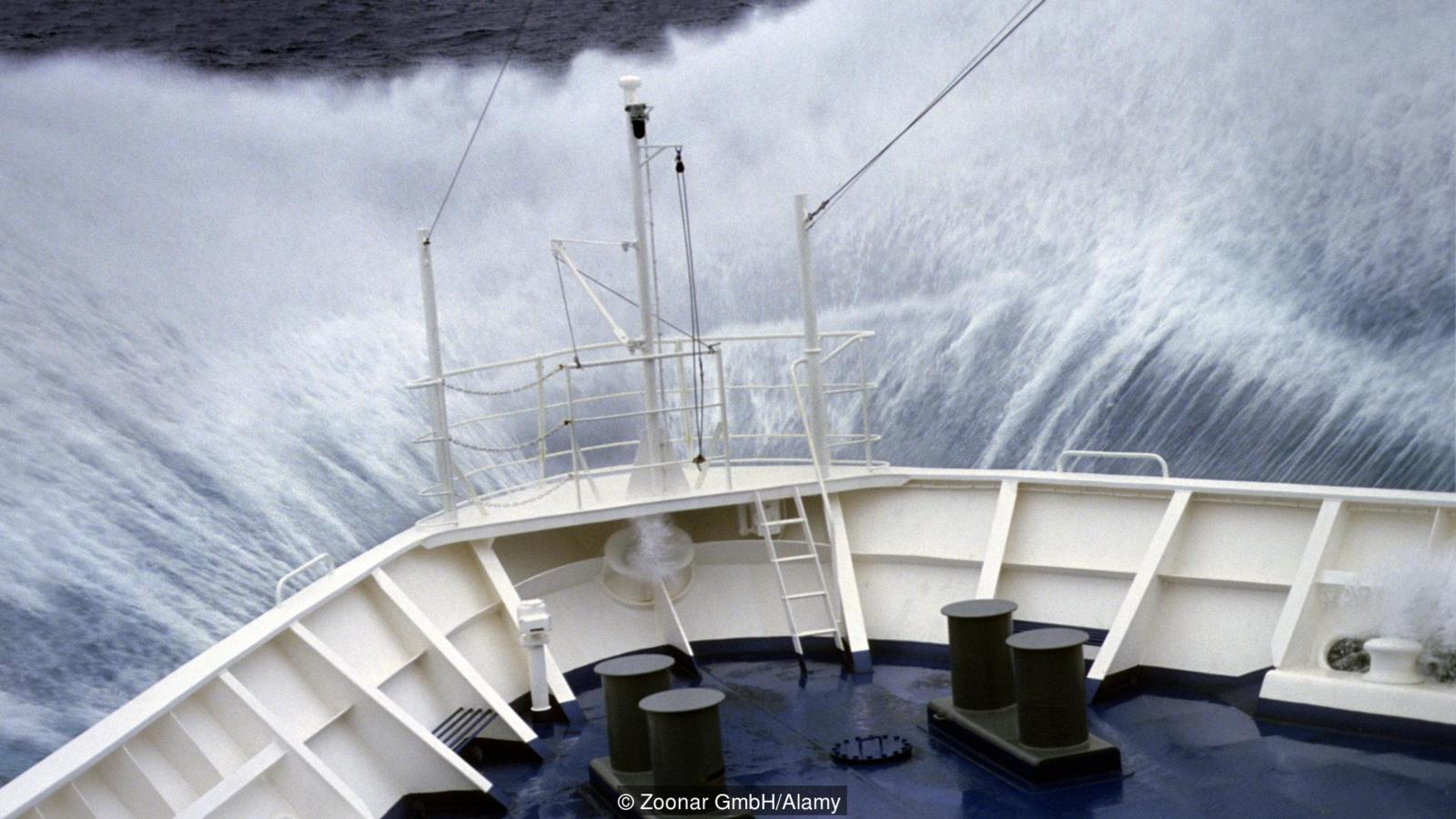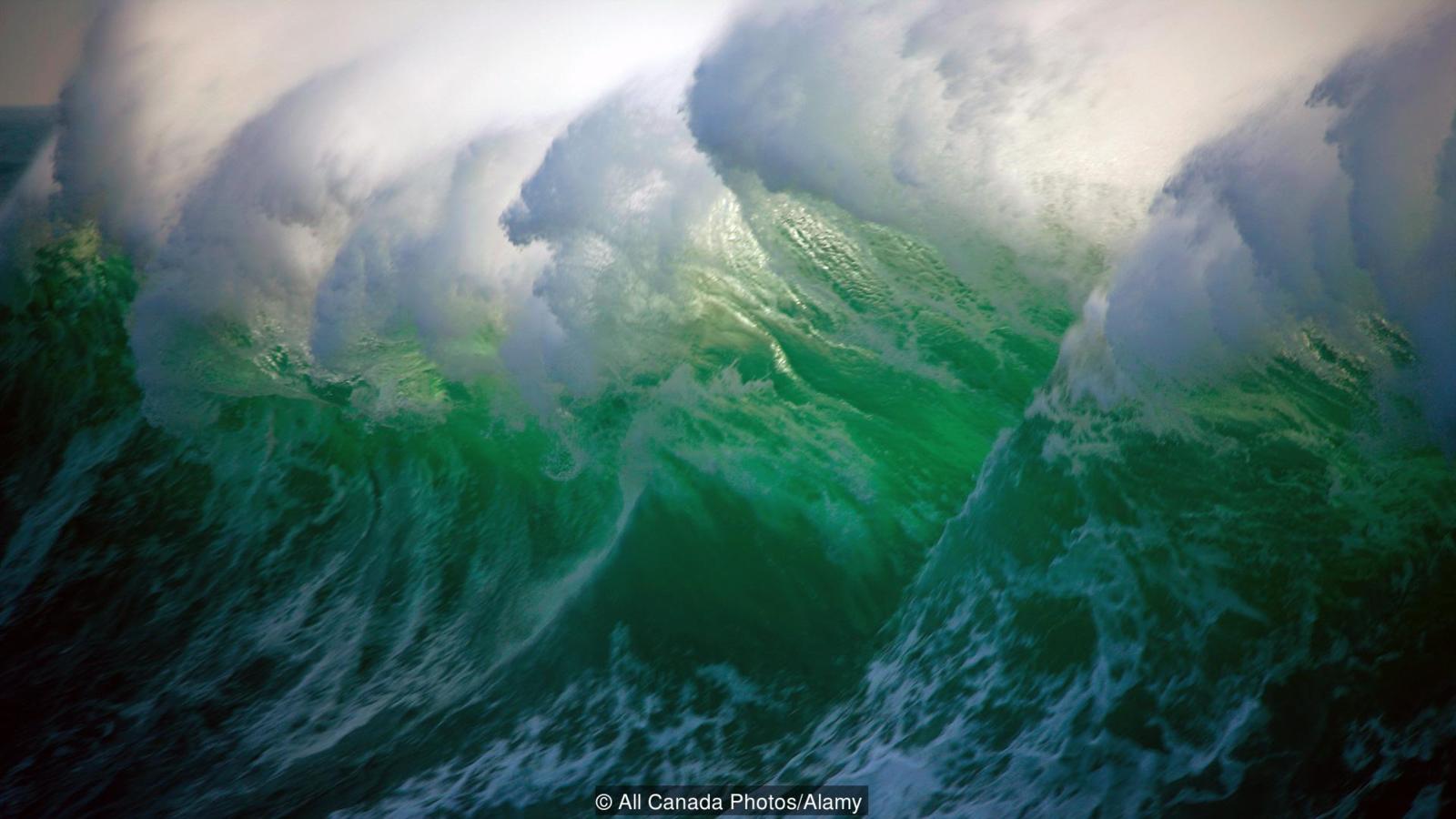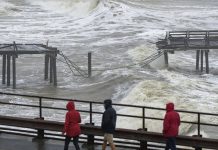For centuries sailors told stories of enormous waves tens of metres tall.
They were dismissed as tall tales, but in fact they are alarmingly common.

There are mysterious giant underwater waves baffling scientists around the world. But what about these ten-storey high, near-vertical walls of frothing water called ROGUE WAVES at the surface of oceans?
Evocative descriptions of abnormally large “rogue waves” that appear out of the blue have been shared among sailors for centuries. With little or no hard evidence, and the size of the waves often growing with each telling, there is little surprise that scientists long dismissed them as tall tales.
Until around half a century ago, this scepticism chimed with the scientific evidence. According to scientists’ best understanding of how waves are generated, a 30m wave might be expected once every 30,000 years.

Rogue waves are no maritime myths
A wave is a disturbance that moves energy between two points. Although a wave rolling across the Atlantic is not the same as a radio wave, they both work according to the same principles, and the same equations can be used to describe them.
A rogue wave is one that is at least twice the “significant wave height”, which refers to the average of the third highest waves in a given period of time. According to satellite-based measurements, rogue waves do not only exist, they are relatively frequent. The sceptics had got their sums wrong, and what was once folklore is now fact.
What causes rogue waves? More importantly for people who work at sea, can they be predicted?
Two mos aknowledged theory states while waves might start out with constant frequencies and wavelengths, they change unexpectedly shortly after being generated. Those with longer wavelengths catch those with shorter ones, meaning that a lot of the energy ended up being concentrated in large, short-lived waves.
At 3am on 12 December 1978, a German cargo ship called The München sent out a mayday message from the mid-Atlantic. Despite extensive rescue efforts, she vanished never to be found, with the loss of 27 lives. A lifeboat was recovered. Despite having been stowed 66ft (20m) above the water line and showing no signs of having been purposefully lowered, the lifeboat seemed to have been hit by an extreme force.

What really turned the field upside down was a wave that crashed into the Draupner oil platform off the coast of Norway shortly after 3.20pm on New Year’s Day 1995. Hurricane winds were blowing and 39ft (12m) waves were hitting the rig, so the workers had been ordered indoors. No-one saw the wave, but it was recorded by a laser-based rangefinder and measured 85ft (26m) from trough to peak. The significant wave height was 35.4ft (10.8m). According to existing assumptions, such a wave was possible only once every 10,000 years.
The Draupner giant brought with it a new chapter in the science of giant waves. When scientists from the European Union’s MAXWAVE project analysed 30,000 satellite images covering a three-week period during 2003, they found 10 waves around the globe had reached 25 metres or more.
In principle, it is possible to predict an ocean rogue wave
Real-world data from different types of rogue waves give ou important data to predict rogue waves. Oceanic rogue waves were predictable to some degree. So, in principle, it is possible to predict an ocean rogue wave, but our estimate of the reliable forecast time needed is some tens of seconds, perhaps a minute at most. Given that two waves in a severe North Sea storm could be separated by 10 seconds, to those who say they can build a useful device collecting data from just one point on a ship or oil platform, I’d say it’s already been invented. It’s called a window.
The complexity of waves at sea is the result of the winds that create them. While ocean waves are chaotic in origin, they often organise themselves into packs or groups that stay together. It could give ships and oil platforms 2-3 minutes of warning before a rogue wave formed
Predicting an individual rogue wave event might be hopeless or non-practical, because it requires too much data and computing power. But it is an important question to solve, because we will only be able to predict these deadly waves when we understand them. For anyone sitting on an isolated oil rig or ship, watching the swell of the waves under a stormy sky, those few minutes of warning could prove crucial.












